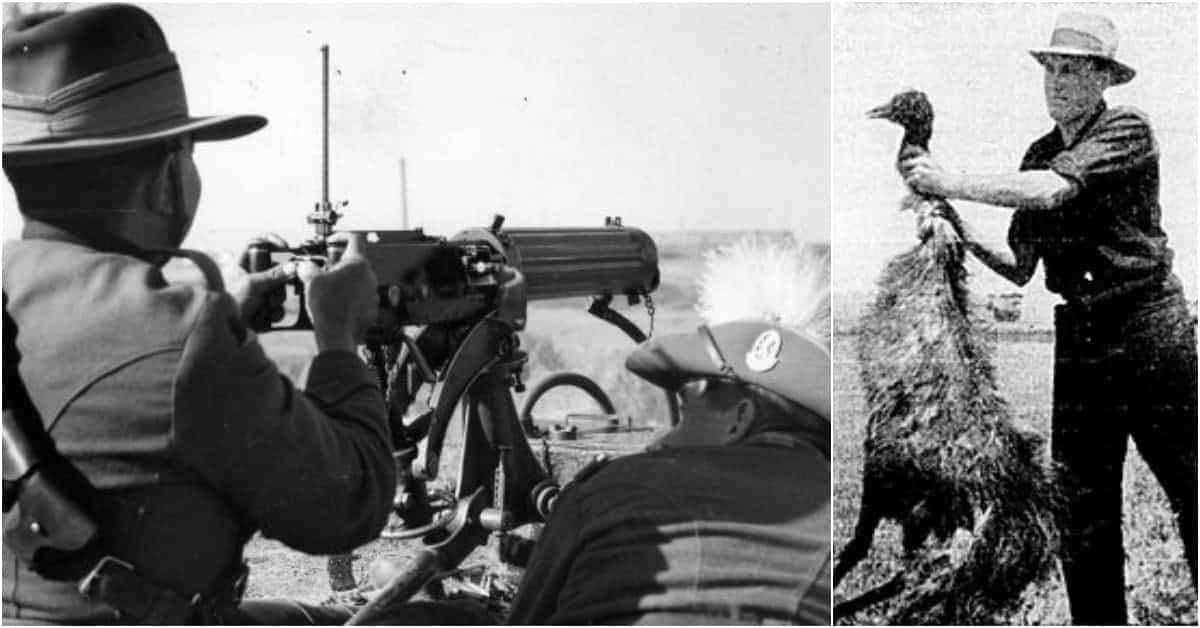Yes, you read that right, and you may have heard of this interesting piece of history before, but here is the full story. To clarify, there was no official declaration of war, but soldiers were mobilized and sent out with machine guns to fight against Emus, and contemporary politicians and reports often dubbed this engagement a “War” with an emphasis on the quotes.
While this sounds outrageous, there were a couple of good reasons and some terrible ones as to why British troops got involved, and no major wars were occurring so troops could be spared to fight the mighty Emu “armies.”
While Australia started as a penal colony, the massive amount of land soon became the retirement goal of many Brits. Even though the land wasn’t always the best quality, a retired soldier could snag quite a hefty chunk of it, significantly more than he could in England. Many former troops settled around Campion in Western Australia, about as far inland as you could get before hitting desert.
It was a tough living for the farmers here, made even more difficult by demands for wheat to feed the starving victims of the Great Depression. The government promised subsidies for farmers to grow extra wheat for food, but the price of wheat plummeted and promised subsidies never came.
The farmers were at their wit’s end, but they would still have more hardships to come. What the farmers didn’t know was that they were about to be visited by one of the worst plagues of pests since the rabbit invasion.
Furius Farmers, a Cheap Government, and Some Hungry Birds

Australia had an invasion of rabbits brought by the first fleets to set up the penal colonies, made worse by settlers bringing rabbits to hunt for sport. Rabbits were an invasive non-native species that were extraordinarily well suited to the climate, and while there were plenty of natural predators, the rabbits had enough food to outbreed any threat.

In response to the exploding rabbit population devastating crops and eroding topsoil, a massive rabbit-proof fence was erected that extended over 1,000 miles north to south, coast to coast, with another 1,000 miles of forked-off fences. This fence combined with rabbit hunting, wide-scale poisoning efforts and other containment methods to give farmers some room and safety to grow.

The equation changed when the emus began migrating. Generally, after their mating season, emus would migrate to the coast where there was access to more food and water. On their way, the emus noticed that these farms around Campion had plenty of food and even water. Why bother going to the coast when they had all that they needed.

